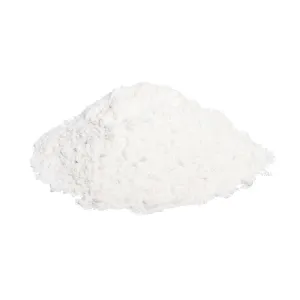
As one of the main raw materials of fermented ethanol, the price fluctuation of corn plays an important role in ethanol production and price.
Corn: the first quarter showed a concussive and weak trend, the Spring Festival stock ended in January, the festive atmosphere was strong, the market trading was light, and the price was stable; in February, the market purchase and sales basically returned to normal, the volume decreased, and the market supply shrank, supporting corn prices to fluctuate up slightly. In March, the national corn market officially entered a downward range, market supply increased, superimposed futures prices continued to decline, while wheat plummeted, prompting corn prices to decline. The corn market first fell and then rose in the second quarter. Under the influence of rainy weather and northeast storage policy in the first ten days of April, corn prices rose briefly, and then fell again with the increase in market volume. Corn and wheat prices hung upside down in May. Downstream enterprises purchased a large number of wheat instead of corn, corn demand decreased significantly, prices fell rapidly, and began to rebound at the end of May. In June, corn prices rose rapidly under the influence of multiple factors, such as sales by traders in producing areas, low port inventory, rising futures prices, rising substitute prices and so on. Corn high shock in the third quarter, last time all inventory sales, traders warehousing costs superimposed, low price absorption, although there is a release of stored grain in the middle, but the limited quantity is not enough to affect the market price trend. In the fourth quarter, the volume in North China began to increase in September, and the price fell slightly due to the increase in supply. Brazilian corn entered the stage of concentrated delivery, and the supply of low-price import substitutes increased. The concentrated volume in Northeast China is around November, the price of Kai scale is high and low, and it has experienced several rounds of blizzard weather in a row. Blocking the quantity at the grass-roots level has led to an obvious rebound in spot prices and supply pressure, as the impact of snowfall has been diluted and shipments have resumed. Grass-roots shipping mentality is positive, prices are weaker, and downstream demand is weak, which aggravates the weakening of corn prices.
China Corn event in 2023
According to the Xinhua News Agency on January 7, China's first bulk import of Brazilian corn arrived at the port of Mayong in Guangdong Province. The first shipment of Brazilian corn was shipped from the port of Santos, Brazil, totaling 68000 tons, imported by Cofco. This is the first time that China has imported Brazilian corn by bulk ships, marking the official opening of the Brazilian corn export corridor to China.
II. The Ministry of Commerce continues to impose anti-dumping and countervailing duties on imported dried corn lees originating in the United States.
III. Executive meeting of the State Council: it is put forward that the goal and task of China's grain production is "two stability, two expansion and two proposals".
Premier Li Keqiang of the State Council presided over an executive meeting of the State Council on January 28. the focus of the objectives and tasks of China's grain production this year is to "stabilize the area and output, expand beans and expand oil crops, and increase yield per unit area and self-sufficiency rate." In order to achieve these goals, we must grasp various measures early and firmly. In this regard, the meeting put forward five requirements: the first is to grasp the spring field management of wheat and rape; the second is to clarify the grain and oil production targets of various places as soon as possible to ensure the implementation of spring sowing area and stabilize the soybean planting area; the third is to provide solid security services; fourth, to implement policies such as minimum purchase price and producer subsidies. Fifth, increase support for soybean planting, continue to implement full coverage of wheat subsidies for "one spray and three prevention", allocate funds for pest prevention and control in advance, and implement subsidies for centralized seedling raising of early rice in southern China, so as to arouse farmers' enthusiasm and increase production and income.
IV. The release of the No.1 document of the Central Committee: putting the improvement of per unit yield in an important position
On February 13, 2023, the State Council issued the CPC Central Committee.
Guidance of the State Council on doing a good job in comprehensively promoting the revitalization of rural areas in 2023. This is the 20th "document No. 1" issued since the 20th century, which points out that the most arduous and arduous task of building a socialist country in an all-round way is still in the rural areas. A strong country must first strengthen the agriculture, and only when the agriculture is strong can the country become strong. From a policy point of view, the planting area of corn is first guided by the national policy, especially the influence of the No. 1 document of the Central Committee, from "two stability and one increase" in 2021 to "two stability and two expansion" in 2022. Stable food rations, stable corn, expand soybeans, expand oil. The key words of the target task of China's grain production in 2023 are "two stability, two expansion and two mention", that is, stabilizing area and output, expanding beans and expanding oil crops, increasing yield per unit area and raising self-sufficiency rate. Document No. 2023 puts raising the level of per unit yield in an important position, and the document summarizes the objectives of China's overall grain production as follows: stabilizing area, attacking per unit yield, and increasing production. The increase of corn yield in the future depends more on the improvement of planting technology. China's corn yield level is in the lower and middle level among the major producing countries in the world, compared with the level of 11 tons per hectare in the United States. China's corn yield level is only about 6.4 tons per hectare, which is obviously different from that of the United States. The increase of China's corn yield in the future will depend more on the increase of the per unit yield level.
The total output of industrial feed in China reached a new high in 2022, exceeding 300 million tons for the first time.
VI. Harbin issues detailed rules for the implementation of the project to support the return of Russian grain
On March 23, the Harbin municipal government announced the detailed rules for the implementation of the project to support the return of Russian grain: for those foreign-invested planting enterprises in Harbin to return soybeans, wheat, rice, corn and miscellaneous grains more than 1000 tons per year, a subsidy of 50 yuan per ton will be given, with a maximum subsidy of 1 million yuan per household. The subsidy object is registered in Harbin according to law, the import and export volume is included in Harbin customs statistics, registered in the unified platform of the business system of the Ministry of Commerce and in the normal state of operation of the main body of agricultural planting projects in Russia. The quantity of return shall be subject to the total quantity of import declaration provided by the enterprise. Comments: Russia is the world's largest wheat exporter, but China rarely imports wheat from Russia. The introduction of this policy is of far-reaching significance to further open up international food sources and diversify import channels.
7. China and Australia reach consensus on barley dispute
A spokesman for China's Ministry of Commerce responded on April 11 that China and Australia have recently held friendly consultations and reached consensus on the dispute over barley "double countermeasures" measures under the framework of the World Trade Organization (WTO), reflecting the spirit of mutually beneficial cooperation. China is willing to work with Australia to continue to work in the spirit of dialogue, consultation and cooperation, take care of each other's industrial concerns, properly resolve economic and trade disputes, and jointly promote the stability of bilateral economic and trade relations.
VIII. The country's first ship of feed corn from South Africa arrives at Ma Chung Port, Dongguan Port.
9. Russia will increase grain exports to China through the "Russia-China-New Zealand Grain Land Corridor"
General Administration of Customs: Jilin Province has agreed to increase the Russian port of Vladivostok (Haisenwei Port) as a transit port for domestic trade goods.
11. The draft Law of the people's Republic of China on Food Security (draft) is open to soliciting opinions.
Food is related to the national economy and people's livelihood, and food security is an important foundation of national security. Solving the problem of feeding more than a billion people has always been a top priority for our party in governing the country. General Secretary Xi Jinping pointed out that only when we firmly take the initiative in food security can we restore the initiative to a stable and powerful country.
In order to ensure effective grain supply, ensure national food security, and improve the ability to prevent and resist food security risks, on June 26, the Law of the people's Republic of China on Food Security (draft) (hereinafter referred to as the "draft") was submitted to the third session of the standing Committee of the 14th National people's Congress for deliberation. This is the first time the draft has been submitted to the standing Committee of the National people's Congress for deliberation.
The draft consists of 11 chapters and 69 articles, including general principles, cultivated land protection, grain production, grain reserves, grain circulation, grain processing, grain emergency, grain conservation, supervision and management, legal liability and supplementary provisions. At present, the full text of the draft is published to the public and publicly solicited opinions. The deadline for consultation is July 27, 2023.















